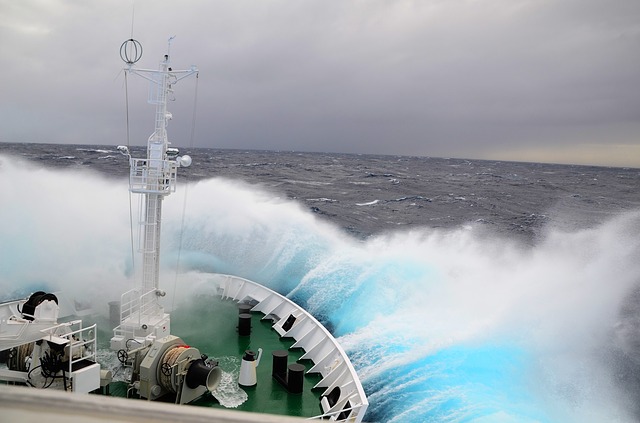
The Drake Shake or the Drake Lake
Anyone who travels to Antarctica by cruise ship or private yacht has to face the Drake Passage. This is the body of water between Cape Horn at the bottom tip of South America and the sub-Antarctic South Shetland Islands. The Atlantic, Pacific and Southern Oceans all meet here and create probably the choppiest water you will find anywhere.
Depending on luck and prevailing weather you will either encounter the Drake Lake (calm seas) or the Drake Shake (very rough seas). If you encounter the latter and you normally get sea sick then you won’t be alone, as three quarters of your fellow voyagers will be joining you in staying in their cabins near their sick bags and the suffering will be mild to intense.
I don’t experience sea sickness but I am told that a number of substances and medicines will help, such as ginger, Polaramine/Phenergan, Gravol, Malbec, Kwell, Stemetil, Dramamine, Benadryl and anti-sea sickness wrist bands, but no one thing works for everyone.
The Drake is about 1000 km across and it usually takes around two days to complete the crossing. On the journey there will be lectures on board about all things Antarctic. If you can drag yourself out of your room you’ll usually encounter lectures by polar historians, ornithologists, whale experts, oceanographers or professional photographers.
You’ll also learn that the Drake is named after Sir Francis Drake who was down here when his ship was blown south of the Magellan Strait at the bottom of South America in 1578. The Spanish prefer their name for it, Mar de Hoces (Sea of Hoces), named after Francisco de Hoces, who allegedly sailed here in the 1500’s. For them, in their tiny, by comparison, wooden ships lacking GPS and radar the Drake was a formidable undertaking.
Maybe, besides the high cost of the trip, crossing the Drake passage is the other price you pay for entry to the Antarctic. As one of my Special Forces sergeants used to say ‘If it was easy, everyone would do it’ and if humans get things too easy they don’t appreciate them. Antarctica, as our greatest wilderness, needs to be appreciated.
The high cost and sometimes difficult Drake Passage may help to keep the tourist numbers down, which in turn helps to protect the Antarctic ecosystem. Unfortunately, the tourist numbers continue to increase (around 50,000 at last count), though to be honest the Drake is generally not considered to be too bad unless you get a particularly rough trip.
If it was easy, cheap and close by, there would already be numerous hotels, souvenir stands and McDonalds dotted all over the Antarctic Peninsula, not to mention the accompanying pollution.
Thank God for the Drake Passage 🙂

